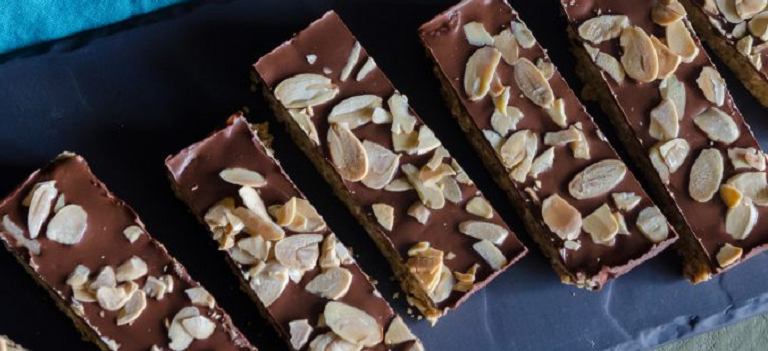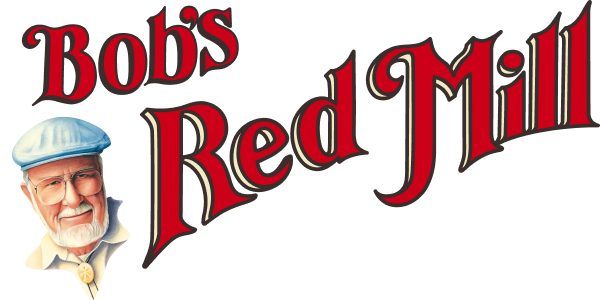With many individuals switching over to a vegan or vegetarian diet, plant-based protein supplements are on the rise. If you're trying to choose a vegan protein supplement and find yourself stuck between soy protein and pea protein, we're here to help. Both popular plant protein sources, these supplements are loaded with nutrients essential to good health. As high-quality protein sources, knowing the benefits and potential risks can help you choose which is suitable for you. Read on as we compare soy protein vs. pea protein in this complete guide.
What Is Soy Protein?
Soy protein is a plant based protein derived from soybeans. The soybeans are dehulled, extracted and isolated from the fat resulting and a protein-rich compound. In addition to being a popular protein supplement, soy is also used as an additive in many processed and packaged foods like cereal, granola bars and soy milk.
What Is Pea Protein?
Pea protein is derived from peas. It is usually made with split peas or yellow peas and is one of the best protein sources, with a 90% protein content. To make pea protein, peas are harvested, dried and rehydrated before the protein is extracted.
How to Use Plant Based Protein Powder
If you've been thinking about adding a plant based protein powder to your diet, the next step is discovering how to use it. Plant based powders are most popular amongst individuals following vegan, vegetarian and dairy-free diets. With many people allergic to dairy, whey protein is not an option, and finding an alternative is essential to boosting protein intake. In addition, plant based proteins like pea and soy provide a boost of protein and are equipped with a complete amino acid profile.
Protein powders are an excellent way to add and maintain muscle mass, recover from strenuous workouts, and boost overall health. There are several ways to work plant based protein powder into your daily diet. Here are a few of the most common.
- Add a serving of plant protein to your morning smoothie.
- Stir a plant based protein powder like soy or pea protein into a bowl of oats.
- Bake soy protein into a protein bar for on-the-go energy.
- Add protein powder to a post-workout snack like these Loaded Protein Balls.
Incorporating more protein into your daily menu and post-workout snacks is an excellent way to reach your health goals. Because proteins like soy and pea protein work similarly to whey protein, they share many of the same benefits.

Comparing Soy Protein Powder and Pea Protein Powder
Though pea protein and soy protein both share resemblances, they are different in many ways. Here's a closer look at how soy protein and pea protein differ.
Protein Content
Pea and soy protein contain significant amounts of protein, though soy protein usually contains slightly more protein than pea protein powder. Both supplements are low in carbohydrates and fat.
Micronutrients
Like other plant based protein powders, soy and pea protein offer a wider variety of micronutrients. In addition, nutrients like phosphorus, manganese, copper and iron can be found in these protein sources.
Isoflavones
What makes these proteins different is something called isoflavones. Soy protein contains isoflavonescompounds with a hormone-like structure. However, nearly all of the phytoestrogens are removed when making soy protein powder during the isolation process.
Complete Protein Sources
Both soy and pea protein are complete protein sources. This means that they contain the nine essential amino acids the body requires to stimulate muscle protein synthesis, which helps build and repair muscle mass.
Pea protein's amino acid profile is similar to whey protein and makes it popular amongst gym-goers and individuals looking to build muscle mass and recover quicker. Whereas soy protein contains healthy amounts of L-Glutamine, which can help prevent muscle protein breakdown and speed up recovery time.
Digestibility
One of the most crucial aspects of choosing a plant based protein powder is choosing one that is easily digested. Each protein is given a score based on a rating method known as the PDCAAS (protein digestibility-corrected amino acid score). The PDCAAS judge a protein powder based on its amino acid profile and human's ability to digest them. Many plant based protein powders have low scores and are hard to digest. However, pea protein isolate ranks at a 0.9 on a scale of 11, being the highest in digestibility. Soy protein powder ranks with a score of 1, which is the highest rating. A protein powder's PDCAAS score is directly correlated to the benefits it provides.

Taste
Taste is another deciding factor when choosing a plant based protein powder. Luckily, pea and soy protein have a generally mild flavor. Pea protein features a neutral flavor that mixes well with sweet and savory recipes. Soy protein powder provides the same neutral flavor as pea protein and boasts an even smoother texture.
Overview: Pea Protein vs. Soy Protein
- Pea protein and soy protein contain all nine essential amino acids making them complete protein sources.
- Soy protein typically has more protein per serving than pea protein.
- Soy protein has the highest bioavailability score (PDCAAS) of 1, which is slightly higher than pea proteins score of .9
- Both proteins offer a neutral flavor and smooth texture.
- Certain individuals may be allergic to soy protein.
The Importance of Comparing Labels
Not all protein supplements are created equal. When incorporating any supplement into your diet, we recommend checking the labels beforehand. Quality protein powders will have easy-to-read labels with minimal ingredients. Avoid protein powders that contain proprietary blends or mixes, and stick to those that are transparent about the ingredients used.
Bob's Red Mill Soy Protein Powder
At Bob's Red Mill, we offer several plant-based protein powders. Our
Soy Protein Powder provides a nourishing source of complete protein. As a dairy free, gluten free, unflavored and unsweetened powder, it's the perfect protein supplement for any diet. Work this protein powder into your morning smoothie or bake it into an on-the-go barthe possibilities are endless.
Both pea protein and soy protein are excellent plant protein sources. They offer substantial amounts of high-quality protein, are easily digestible and have a neutral taste. While pea protein provides more amino acids per serving, both proteins have been shown to help training and exercise performance.
Nutritional Information for Bobs Red Mill Soy Protein Powder
Curious to learn more about how incorporating
Soy Protein Powder into your diet can benefit your health? Read on to review the nutritional information for soy protein powder.
Serving Size 1/4 Cup
Calories 70
Total Fat 1g
Saturated Fat 0g
Trans Fat 0g
Cholesterol 0mg
Sodium 190mg
Total Carbohydrate 1g
Dietary Fiber 0g
Total Sugars 0g
Protein 16g
Vitamin D 0mcg
Calcium 8mg
Iron 2mg
Potassium 8mg
Soy Protein Powder Recipes
If soy protein powder's high digestibility score left you impressed, you probably wonder how you can begin working it into your weekly meals. Protein powder is an easy way to sneak protein into any recipe. Check out the recipes below for inspiration.
Soy Protein Bars

Whether you're looking to boost your daily protein intake or want something to munch on between meals, protein bars are the perfect option. Easy to make and pack with you, a large batch of protein bars can be made ahead of time, frozen and enjoyed for weeks. For a flavorful and nutritious snack, make these
Soy Protein Bars. Made with our
Whole Grain Oat Flour,
Old Fashioned Rolled Oats,
Soy Protein Powder and
Flaxseed Meal, they're loaded with vitamins and minerals that will help you stay energized through the toughest of workouts. Sweetened with chocolate chips, peanut butter and a dash of maple syrup this bar doubles as an after-dinner dessert.
Note:Eating raw oats is generally safe, but may cause digestive issues or increase the risk of foodborne illness.
Soy Sunshine Smoothie
Smoothies are an excellent way to increase the amount of protein you consume without changing your diet drastically. The next time you're searching for a protein-powered breakfast, try making this
Soy Sunshine Smoothie. Simply blend up
Soy Protein Powder, pineapple juice, mango and banana to create a meal overflowing with nutrients. Easy to make, this smoothie's ingredients can be prepared the night before and blended in the morning in just minutes
The next time you find yourself purchasing a plant based protein powder, review this guide beforehand. Soy or pea protein might be the better choice depending on your unique health needs. Or, if you're someone who likes options, purchase them both and see what you think. We're confident that no matter how you decide to use these protein powders, your body will thank you for it. From everyone at Bob's Red Mill, have a protein-packed day!
Do you prefer one type of protein powder over another? Share your thoughts on protein powder with us in the comments below. We look forward to hearing from you.





 Whether you're looking to boost your daily protein intake or want something to munch on between meals, protein bars are the perfect option. Easy to make and pack with you, a large batch of protein bars can be made ahead of time, frozen and enjoyed for weeks. For a flavorful and nutritious snack, make these Soy Protein Bars. Made with our Whole Grain Oat Flour, Old Fashioned Rolled Oats, Soy Protein Powder and Flaxseed Meal, they're loaded with vitamins and minerals that will help you stay energized through the toughest of workouts. Sweetened with chocolate chips, peanut butter and a dash of maple syrup this bar doubles as an after-dinner dessert.
Note:Eating raw oats is generally safe, but may cause digestive issues or increase the risk of foodborne illness.
Whether you're looking to boost your daily protein intake or want something to munch on between meals, protein bars are the perfect option. Easy to make and pack with you, a large batch of protein bars can be made ahead of time, frozen and enjoyed for weeks. For a flavorful and nutritious snack, make these Soy Protein Bars. Made with our Whole Grain Oat Flour, Old Fashioned Rolled Oats, Soy Protein Powder and Flaxseed Meal, they're loaded with vitamins and minerals that will help you stay energized through the toughest of workouts. Sweetened with chocolate chips, peanut butter and a dash of maple syrup this bar doubles as an after-dinner dessert.
Note:Eating raw oats is generally safe, but may cause digestive issues or increase the risk of foodborne illness.